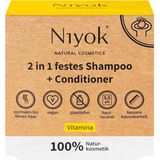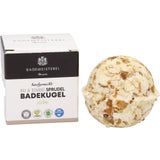INCI - International Nomenclature of Cosmetic Ingredients
You have certainly seen the acronym "INCI" at the front of each ingredient listing. But what does it really mean?
"INCI" is short for International Nomenclature of Cosmetic Ingredients. Simply put it refers to the international guideline for indicating ingredients found in cosmetics, household cleaners, etc. The INCI is found on all cosmetic product container, packaging, enclosed instruction leaflets, and oftentimes on all three.
Allergy Sufferers Take Note
The INCI is especially important to individuals who show allergic reactions to one or more substances. This listing offers allergy sufferers the opportunity to check the listing for any harmful ingredients. Latin names are often used for plant ingredients.
Specifications
The following guidelines are required internationally:
- Ingredients must be listed according to their total weight in descending order. The first ingredient on the list is therefore what the product is mostly composed of.
- Substances that make up less than one percent of the total weight of the product need not be stated.
- The colourants used are generally listed toward the end. There is no specified order in which these colourants are listed.
- Fragrances are not included individually, the reason being that a fragrant substance can be composed of 100 single scents. If these fragrances raise suspicion regarding allergic reactions, they must be listed separately. Currently there are 26 fragrant substances that fall into this category.
Consumer Information
Because accurate percentage indications are not stated, the INCI listing only serves as a source of information in the first instance. One is able to establish the concentration of individual substances used. As a rough rule of thumb: at low concentrations it is less likely for an individual substance to cause an allergic reaction.
Substances
In regard to cosmetics there are 3 substance categories (families) into which the individual substances are divided: active ingredients, auxiliary substances (additives) and base substances.
Base substances are naturally found in the skin. Skin requires these substances in order to function and fulfil its protecting function. The most important components are oils and fats.
Active ingredients refers to substances that unfold their effects alongside the base substances. These include vitamins, enzymes and acids.
Auxiliary substances provides a cosmetic product with a additional properties such as a pleasant scent. These are made up of fragrances, flavouring, emulsifiers, preservatives, etc. The single auxiliary substances are usually found in very small concentrations but in large quantities. Oftentimes they outnumber the number of base substances and active ingredients.
Note: The INCI specification is in no means a seal of quality because these specifications are not always clearly defined (e.g. fragrances).
Related products
-
 4.6 (7)
4.6 (7)Sylveco For Kids Foaming Bubble Bath, 500 ml
-11%- For children from the age of 3
- Soft, delicate foam
- Prevents irritations
$6.71 $7.54 ($13.43 / l)Delivery by January 23
-
 4.4 (63)
4.4 (63)Niyok Solid Shampoo+Conditioner, Vitamina (80 g)
-10%- Suitable for normal to fine hair types
- Improves hair manageability
- Very rich formula
$5.66 $6.28 ($70.72 / kg)Delivery by January 23
-
 4.4 (268)
4.4 (268)Biofficina Toscana uomo Beard Balm, Woody scent (100 ml)
-11%- Rich in flavonoids & antioxidants
- Moisturizing
- Ensures suppleness
$12.55 $14.03 ($125.46 / l)Delivery by January 23
-
 4.3 (15)
4.3 (15)Bademeisterei Organic Bubble Bath Balls, Swiss stone pine (50 g)
-10%- For all skin types
- Lipid-replenishing & conditioning
- Pleasant scent
$3.47 $3.87 ($69.47 / kg)Delivery by January 23
Magazine Articles:
Discover Ecco Verde:
-
Get at least 1 free sample
per order -
Delivery in 3 business days.
More than 19.700 products
Secure payments
with SSL encryption technology

